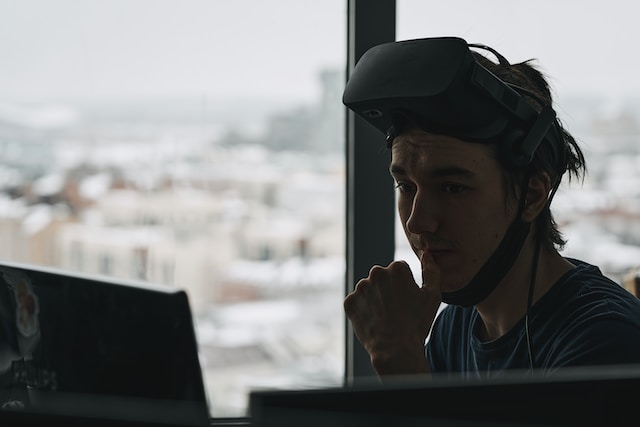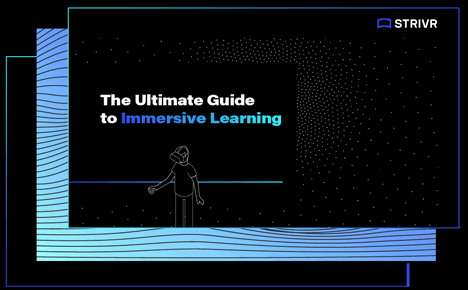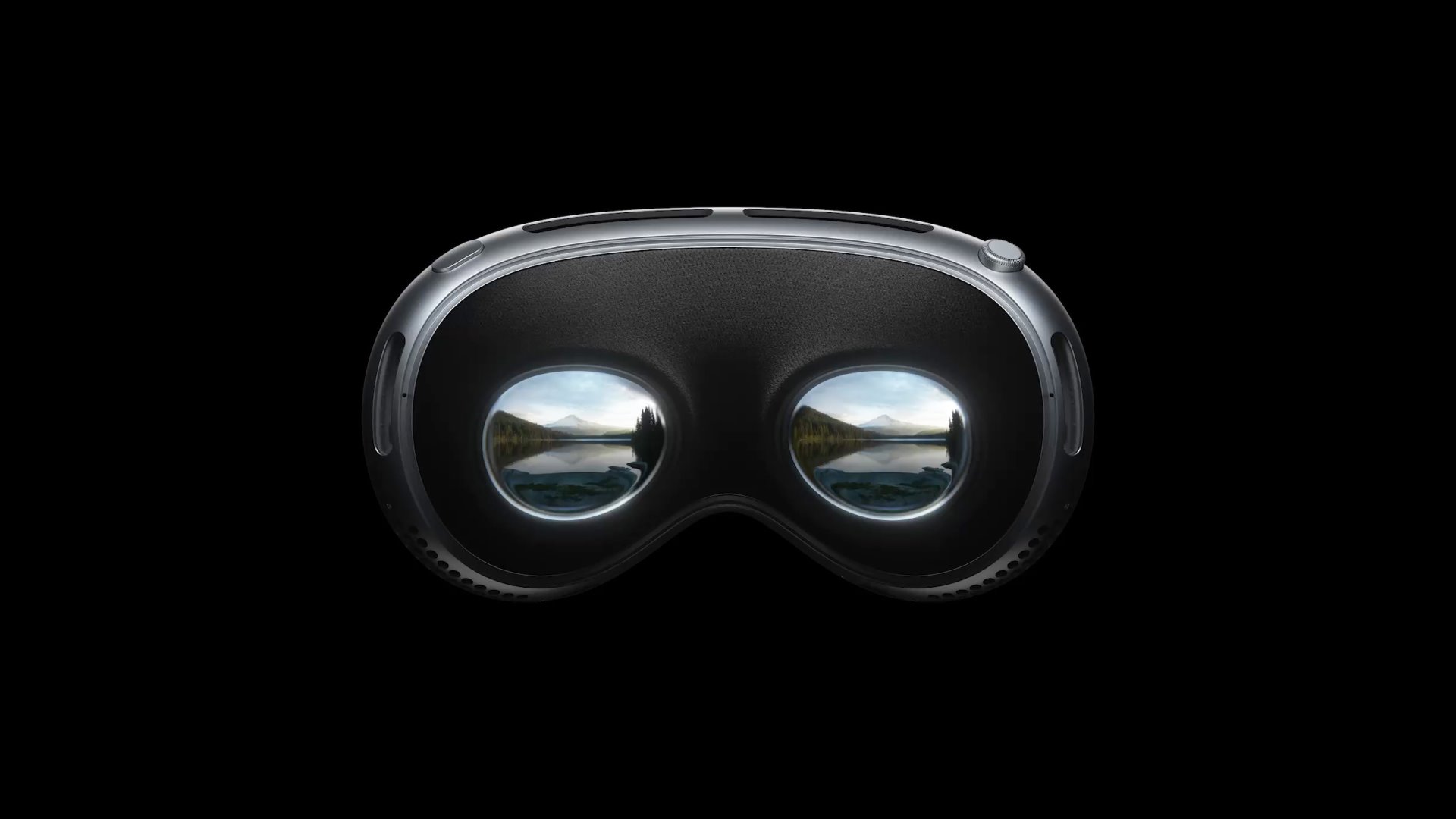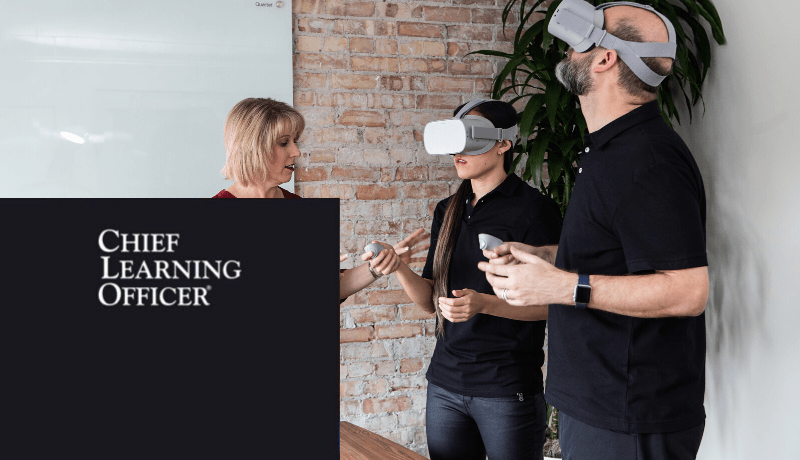“How much does VR training actually cost?”
This is one of the first questions nearly everyone asks. And the answer is… it depends.
It depends on what your organization is hoping to achieve in terms of business objectives. It depends upon the complexity of filming. It depends upon the design of the VR modules and more. There’s a lot that goes into VR training and many variables.
So yes, VR training does require a capital investment. But that investment — and the return it brings — might be different than you imagine, particularly if you work with a VR content partner that offers not just technology and programming but design expertise and analytics capability.
[Webinar] Expert insights: Why employees learn better and faster with VR training
Here, broken down, is a basic cost comparison of VR training vs. traditional training, with a major caveat: The beauty of VR is that it’s both customizable and scalable, so the actual costs your company incur depend upon the exact design, implementation, and use of your VR modules.
The upfront investment of VR training vs. traditional training
The technology can simulate real-world robberies, help with difficult conversations with angry teammates, and deliver operational simulation at a fraction of the cost.
— Josh Bersin
In a formal academic analysis that compared the cost of VR training to that of traditional training models, a recent paper housed in the National Library of Medicine looked at hospital workers being trained on evacuation protocol. Employees of a neonatal care unit engaged in a live disaster exercise that compares a virtual experience to one approximated with mannequins.
This exercise found that initially, VR training was slightly more expensive than traditional training — $327.78 per person vs. $229.79. But when the costs were “extrapolated” over a three-year period in which the training was repeated and reused, the VR training became significantly more economical: $115.43 per person.
The report also notes, “VR excels at simulating dangerous or otherwise logistically difficult situations that are hard to recreate in real life.” Mannequins are one way to replicate a disaster scenario, but there’s nothing like being in the embodied moment of a well-done virtual simulation of a disaster. It gets the heart pumping, forces split-second decision-making, and causes the brain’s neural pathways to forge new connections in case the learner is ever in a real disaster scenario.
The short story: There’s an entire ecosystem of expertise involved in creating, implementing, and measuring VR training, and that comes at a certain upfront cost, but that cost of VR training is paid off pretty quickly — and the training itself can be far more effective.
Let’s break it down a little further.
VR content creation costs vs. traditional training
Creating VR modules requires several types of expertise. At the beginning of a VR training initiative, an organization’s stakeholders gather to figure out business objectives and the appropriate first or next use case for VR. Curriculum design, then “storyboards” how the lessons will look in VR in order to tie them back to business objectives. More people get involved along the way: immersive content specialists, filmmakers, spatial designers, and instructional designers.
If your organization is attempting to create VR training modules in-house, the cost ramps up exponentially in this area because of the sheer talent required. It can be hard to find the right expertise, and if you do, it’s typically expensive. This is a primary reason why working with a VR training resource like Strivr cuts costs considerably. Even very large enterprise companies like Walmart and Verizon don’t have their own in-house VR content creation teams; they outsource to experts in the field.
On the other hand, having the autonomy to design VR training exactly like you want it is important. That’s why major providers like Strivr offer API capability and a network of integration partners to choose from. Strivr’s open platform delivers development tools so companies can build their own VR content in the ways that work best.
VR training hardware costs vs. traditional training
Traditional training hardware:
With traditional training, “hardware” is a pretty general term. It might mean physical training props, literal books and manuals, or, in the case of digital training, computer terminals or tablets.
VR training hardware:
With VR training, hardware typically means the device that delivers the VR experience to the end user — the learner. Once you’ve created VR training modules, delivering them to learners requires VR headsets. For most of the companies Strivr works with, VR headsets are the only hardware investment, and rollout consists of executing a full-scale deployment to those devices. Managing the devices then happens on a software level.
Strivr is “headset agnostic,” which means it works with just about any brand of enterprise-ready VR headset. The cost of VR headsets is rapidly coming down, with the average headset currently about $300.
Try selecting “Reduce training time” in our VR Assessment Tool
All of that said, the cost of VR hardware depends upon the scale of the investment. When Walmart partnered with Strivr on Immersive Learning pilots, it purchased 17,000 Oculus Go VR headsets. Not every company goes big to quite the same degree as Walmart. Since VR can be experienced “on demand,” many companies rotate a much smaller cache of headsets among employees in shifts or in a piecemeal fashion. But more locations typically means more headsets, since shipping these heavy, valuable devices from place to place is inefficient and expensive.
VR training software costs vs. traditional training
Traditional training software:
Training paradigms that take place on a screen have long been implemented via software programs, with much of the cost of the training design being poured into this part of the effort.
VR training software:
VR training requires a different type of software. It doesn’t come on a CD-ROM and it’s not accessible via the public cloud. Instead, it’s typically delivered via a platform that allows you to build and publish immersive content specifically designed for your company. The platform also enables the L&D team at your organization to manage immersive content and gather data from its use.
Strivr’s sophisticated Immersive Learning platform lets you build engaging, impactful experiences, manage devices and modules, and successfully deploy at scale.
By the way, while it might seem like we at Strivr use the terms VR training and Immersive Learning interchangeably, they’re actually distinct. Immersive Learning takes the basic concept of VR training — which places the learner in an immersive environment to practice skills in an embodied way — and combines it with data science, spatial design, and VR training data.
Beyond simple VR content inside a headset, Immersive Learning is a way to teach all kinds of hard and soft skills to limitless numbers of employees, at scale and at a reasonable cost.

VR personnel and talent costs vs. traditional training
Traditional training talent costs:
The personnel and talent required for traditional training can be very expensive. Some companies have “top trainers” they fly from location to location to conduct sessions in person — an extremely expensive and unscalable model. Others deliver training via video or livestream in order to scale sessions among locations, but that option is much less effective in terms of engagement and learning retention.
VR training talent costs:
VR enables companies to send “their best trainer” to every location and limitless numbers of learners at once through virtual experiences in headsets. The number of people who can learn from a trainer at once is limited only to the number of headsets you have. When sharing headsets in a staggered way, that volume goes up.
The economic argument for VR training
Designing training modules incurs other costs, too. With traditional training, those costs depend upon the format: writing and publishing manuals, designing digital experiences, and building out training facilities can all be extremely expensive models.
For an airline like JetBlue, for instance, taking a real plane out of commission to use in training costs thousands of dollars each time. A VR replication of this experience is much less expensive.
While the economy of training is a critical factor for most organizations, there are, of course, other reasons to choose VR training over traditional training. Probably the biggest is that VR training is simply more effective. The effectiveness of VR training is entirely measurable. Time and again, in gathering metrics from Immersive Learning customers, Strivr has found that learners simply prefer VR training, and that they learn more from it — and retain it for longer.
Read on to learn more about Measuring the impact of Immersive Learning.






